How to Visit Maras and Moray (Salt Mines and Ruins), Peru
This is your complete guide on how to visit the Maras Salt Mines and Moray Ruins located just outside the town of Maras in the Sacred Valley.
In this guide, you can read about all the ways to get to Maras from Cusco both independently or with a tour and how to visit the ruins and salt mines.
Most tourists visit the salt mines and Inca ruins as part of a tour that may include other sites within the Sacred Valley such as Pisac or Ollantaytambo. Those tours are a great option for those short on time. However, if you can, we suggest visiting Maras and Moray as a separate day trip from Cusco.
If you’d like to see our Cusco and Sacred Valley adventures then check out the Peru Playlist on our YouTube channel.
Disclosure: This post may contain affiliate links, which means we may receive a small commission if you click a link and purchase something. Clicking these links won’t cost you anything, but it will help us to keep this site up and running! Learn more about our affiliate policy.
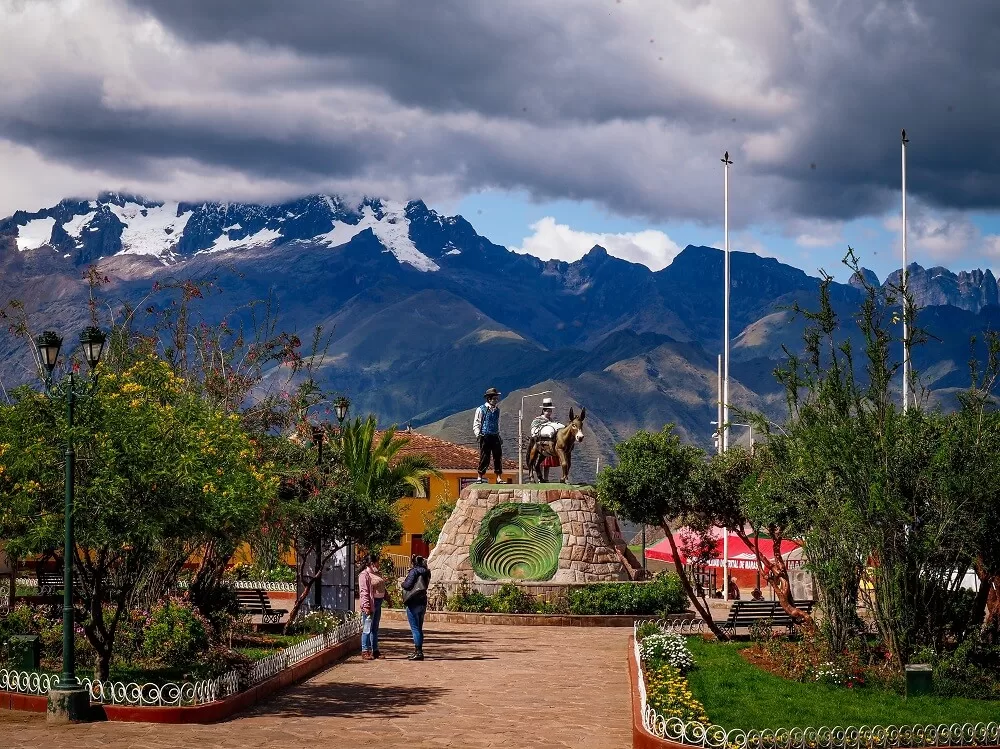
About Maras and Moray
The small town of Maras is located about 41km to the northwest of Cusco in the heart of the Sacred Valley.
It is surrounded by impressive snow-capped mountains like Chikón (5,530 m), which is part of the Urubamba mountain range in the Andes. There are also some mountains nearby, such as Huayanay (5,464 m), that belong to the Vilcabamba mountain range that Machu Picchu is a part of.
Maras is a popular place to visit amongst tourists because of two unique Inca sites: The Maras Salt Mines and the Moray Ruins.
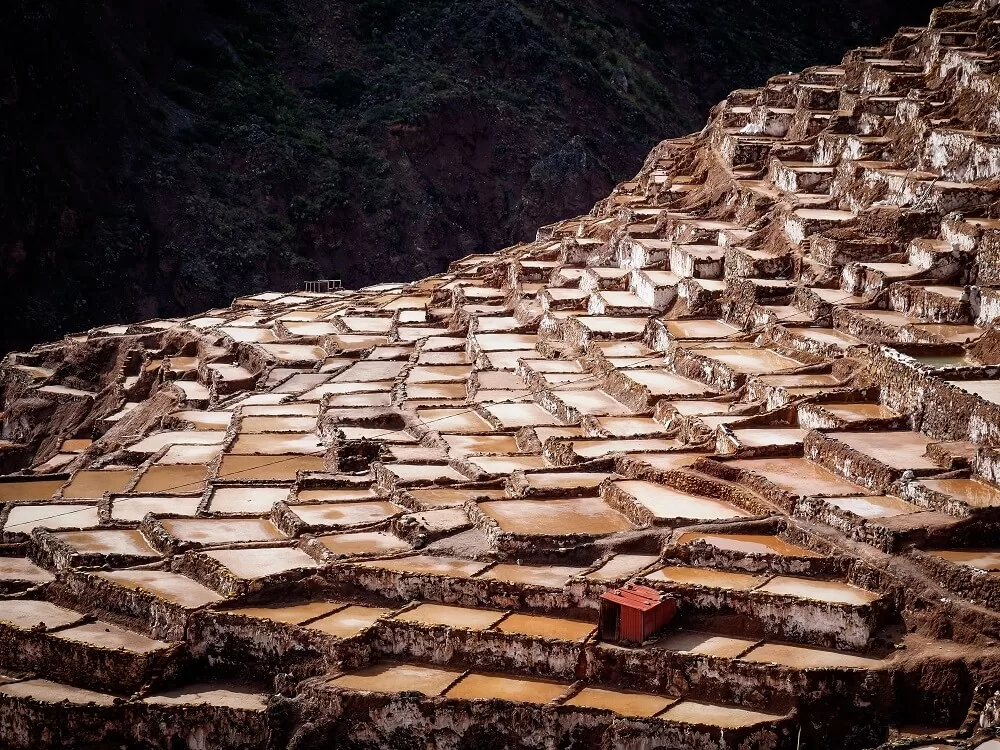
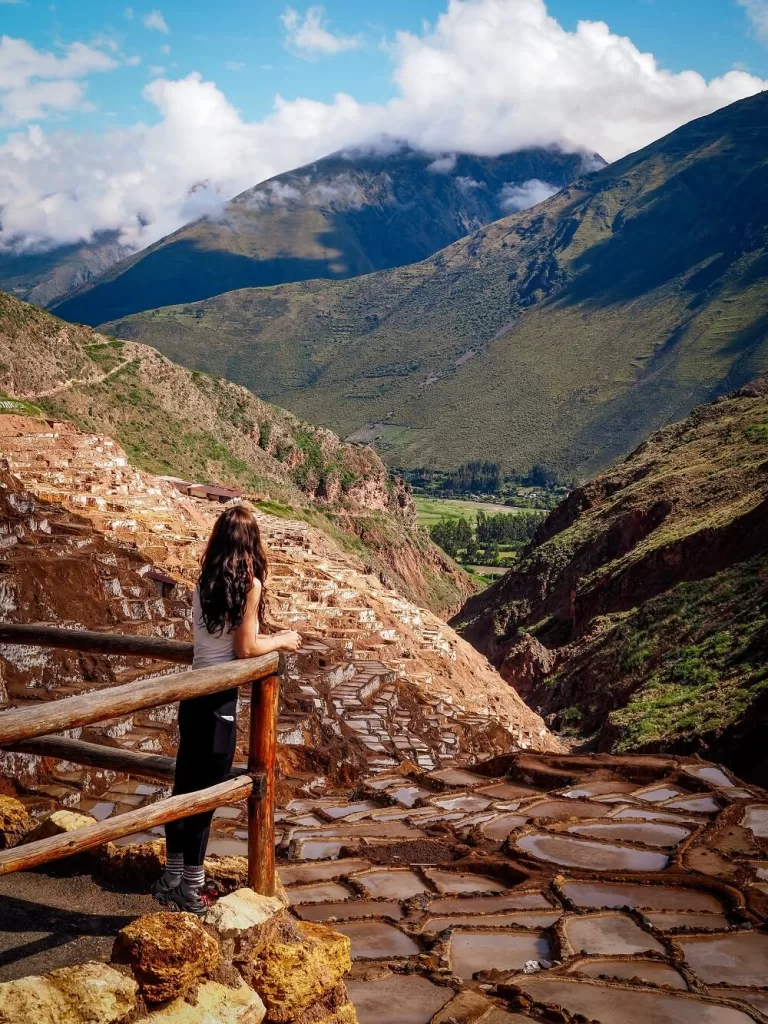
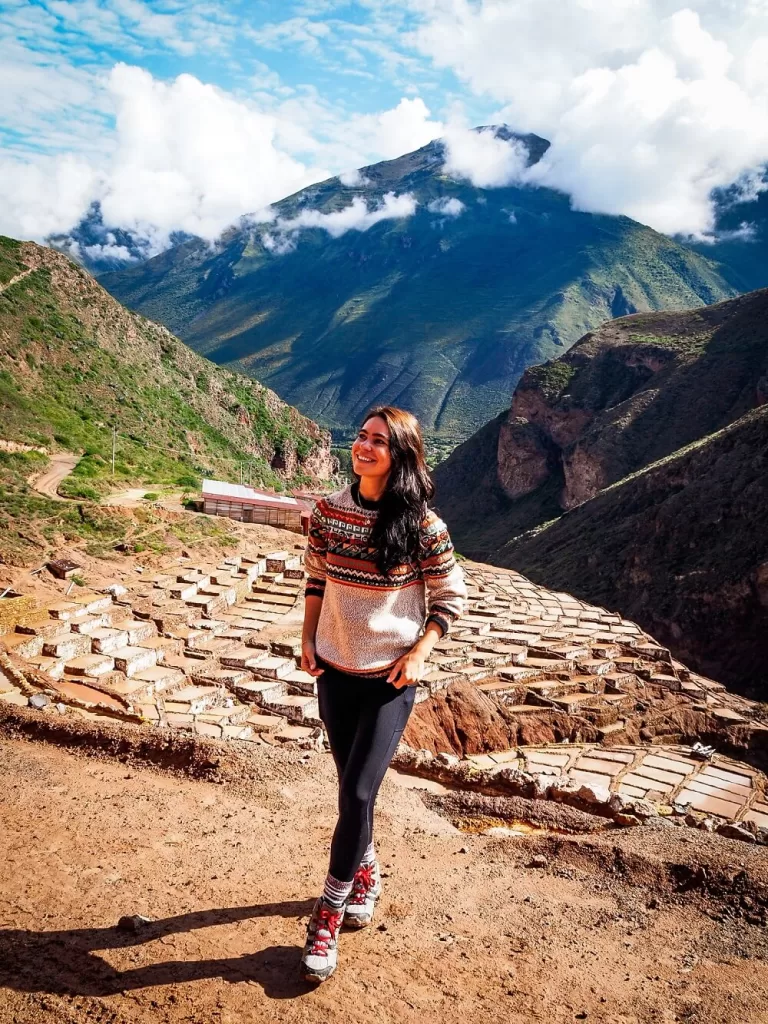
Visiting the Maras Salt Mines (Salineras de Maras)
Thousands of pools that might look like rice terraces from a distance cover the entire side of a mountain just north of the town of Maras.
They are actually ancient salt mines from before the time of the Incas. At this point, you might be wondering how it’s possible to get salt in the Andes. We were wondering the same, don’t worry. After all, most salt pans that we’ve seen, like the ones on Gozo Island in Malta, are right next to the sea.
We learnt during our visit that the water that’s channelled through the man-made pools comes from a subterranean natural spring. The water is mixed with salt deposits from prehistoric salt lakes.
Somehow the people of this region learnt how to collect this water and evaporate it to get salt as the end product of the process. These salt pools are still used today by local families. Each family living in Maras has one or more pools to take care of.
Please note that you aren’t allowed to walk through the salt pans. There is a viewing platform at the top where you can get an overview of the area. If you follow our 3-day hiking route in the Sacred Valley, then you’ll likely enter from the back entrance to the salt mines. This way, you can really appreciate just how large the site is. You’ll still have to pay the entry fee at the main entrance and you still can’t walk through the pools!
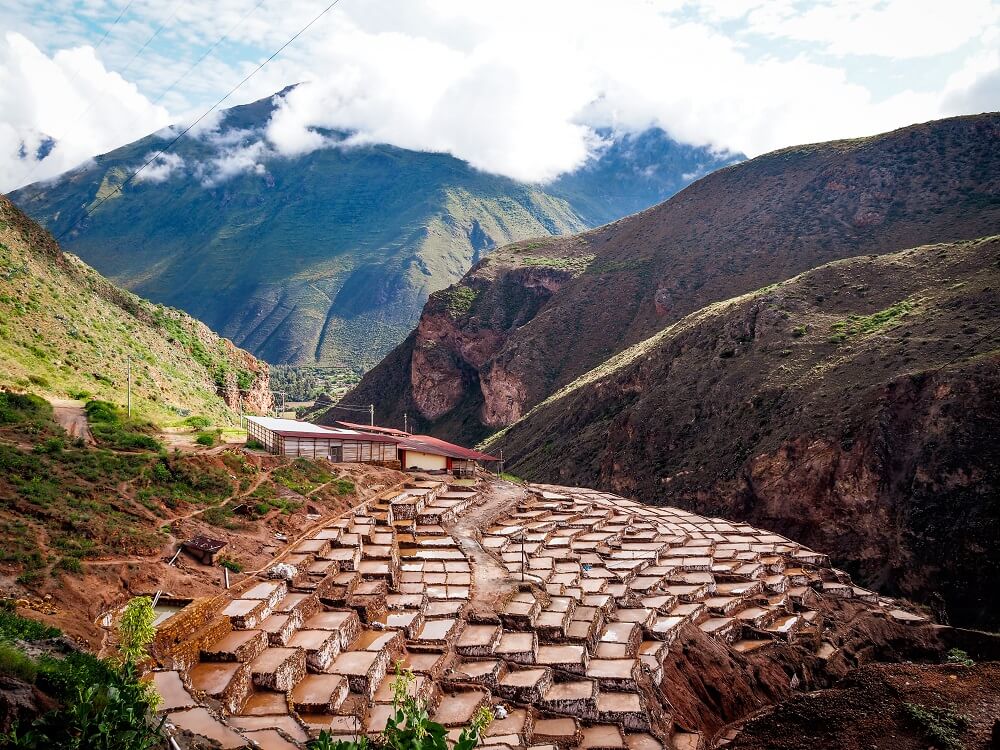
Entry Fee to the Maras Salt Mines
Entry fee to the Maras Salt Mines is S/.10 (3 USD) per person.
Note that the Maras Salt Mines aren’t included in the Boleto Turistico (Cusco’s tourist ticket).
The site is open every day from 8AM to 5PM.
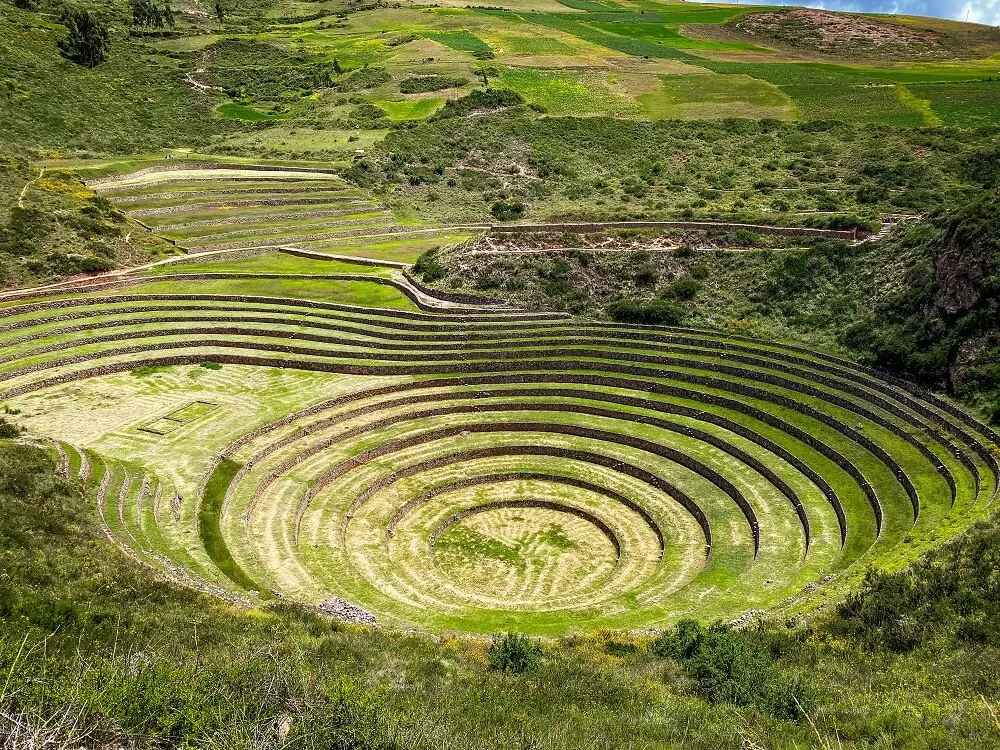
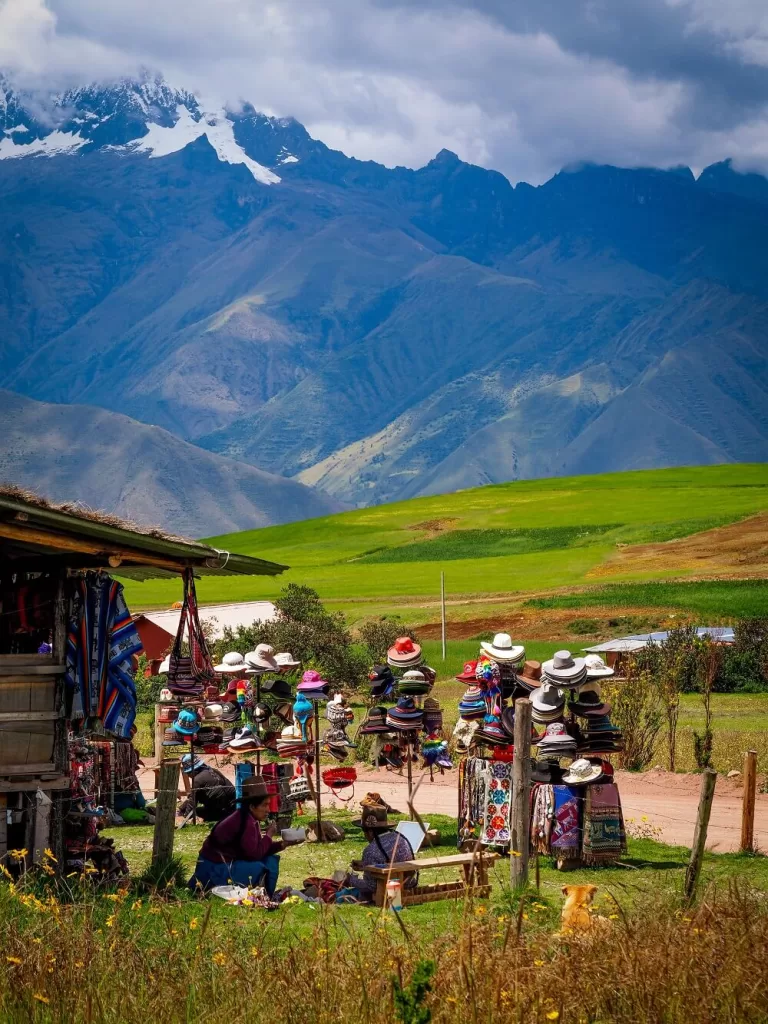
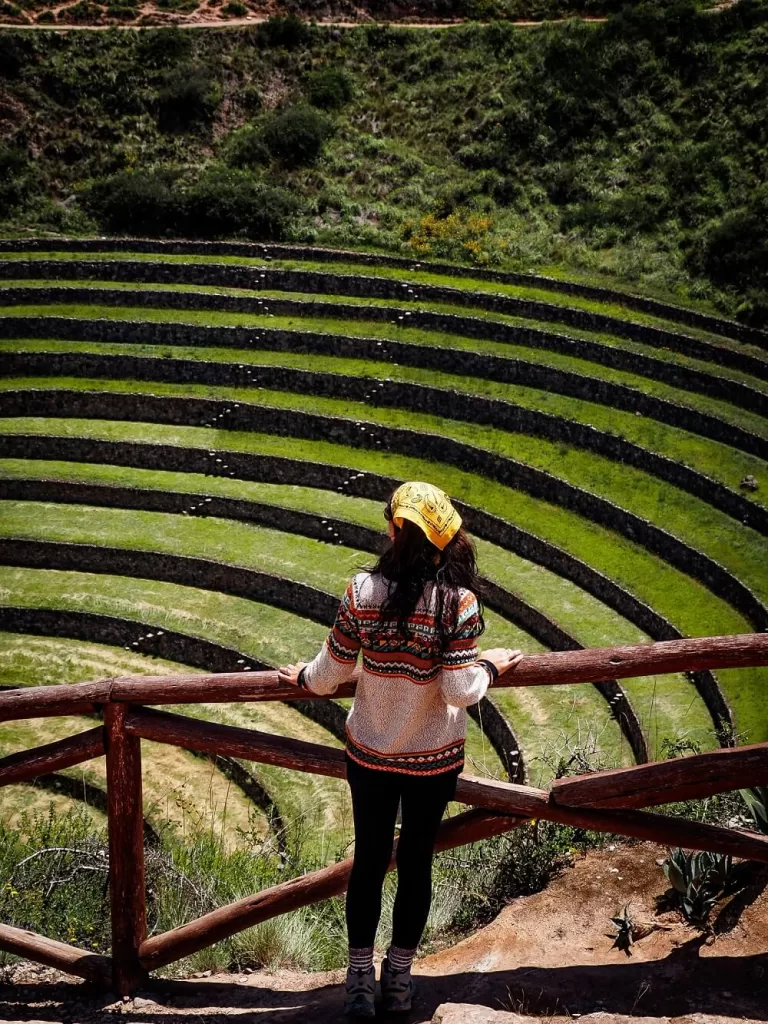
Visiting the Moray Inca Ruins in Maras
The other popular Inca site near Maras is the Moray Ruins.
This Inca site is a bit different to the ones you might have visited around Cusco, in Pisac or in Ollantaytambo. The Moray Ruins are comprised of three massive circular terraces built in depressions that look like huge amphitheatres.
The largest of the three actually has a depth of 150m from the top terrace to the bottom one. They have 12 levels of terraces with the largest having a diameter of over 180m. We definitely needed to use a wide angle camera to capture the entire terrace in one photo!
We assume your next question is probably ‘what did the Inca’s use this site for?’ Well, as with many other Inca sites, it’s still a bit of a mystery. However, there are a few popular theories. The most popular one is that the ruins were used for agricultural research. Apparently channels were built into the terraces that provided water from nearby reservoirs. Anthropologists believe that the temperature difference and different angles of the sun hitting the terraces was the way Inca’s experimented with growing crops at such high altitude.
Other theories include the site being a ceremonial centre or a re-purposed open-pit mine.
To get the most out of your visit, we recommend walking around all three terraces. It’s worth noting that the site lacks any kind of shade, so make sure to have sun protection and plenty of water with you.
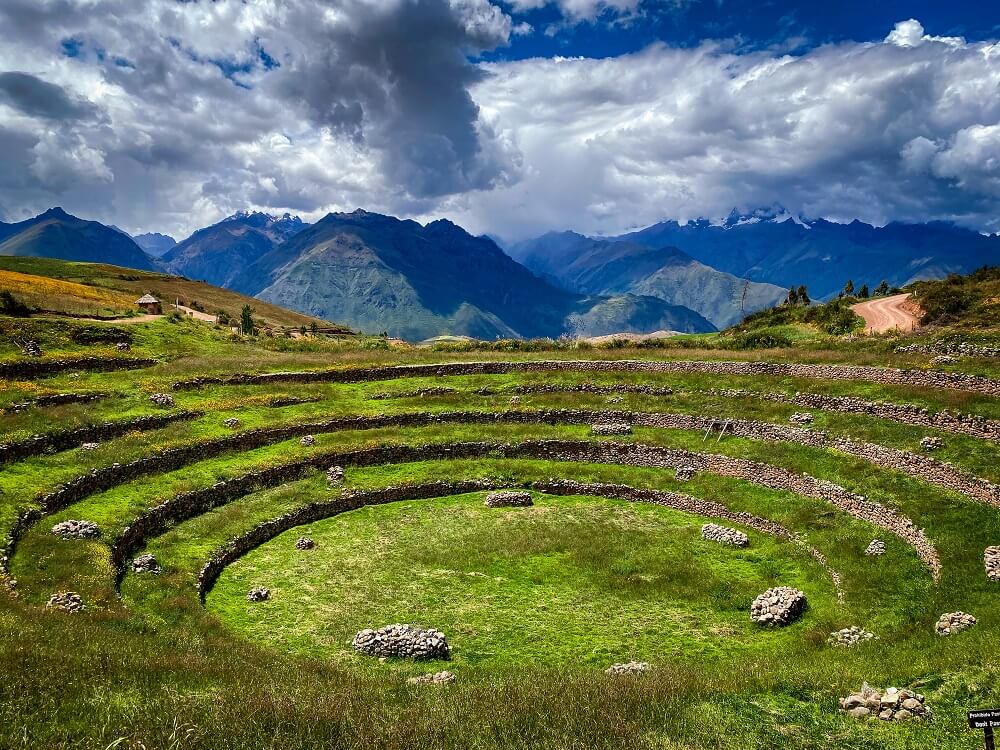
Entry Fee to the Moray Inca Ruins
You can either enter the ruins with an Integral or a Circuit III Partial Boleto Turistico, which is Cusco’s Tourist Ticket.
The full ticket costs S/.130 (35.40 USD). However, it allows you to visit 16 different sites located in Cusco and around the Sacred Valley.
The Circuit III Partial Tourist Ticket is S/.70 (19 USD) but only lets you visit a few other sites within the Sacred Valley.
Click here to read more about the Boleto Turistico.
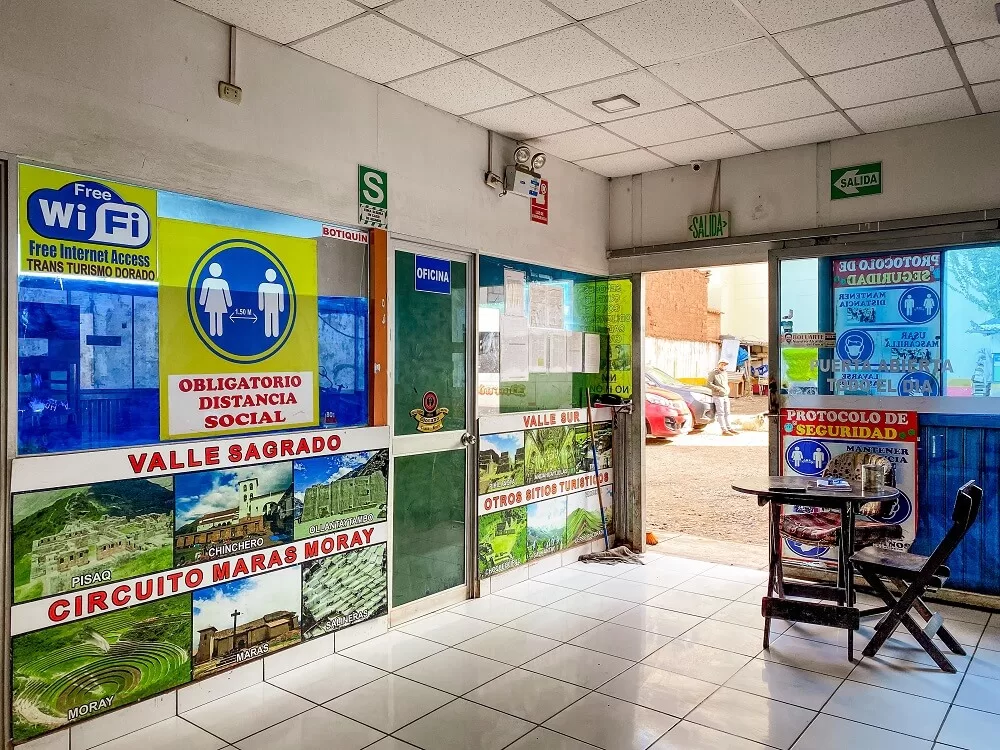
How to Get to Maras and Moray from Cusco
Located an hour and 15 minute drive from Cusco, you can access Maras in a few different ways.
Colectivo
The cheapest way to reach Maras is by going with a colectivo.
Colectivos are basically minivans that go to a certain destination but can stop anywhere along the route to drop people off. Minivans towards Maras leave Cusco from the colectivo station located at Calle Pavitos and Av. Grau. You can either take a taxi or walk to the colectivo station.
Colectivos from this station normally go to Urubamba or Ollantaytambo. Make sure to tell the driver that you’re going to Maras and wish to be dropped off there. A one-way fare to Maras is S/.5 (1.75 USD) per person.
Drivers will wait until they have enough people for the journey to be worthwhile. For this reason we recommend getting to the colectivo station early, so even if you have to wait, you won’t get to Maras too late in the day.
Private Taxi
If you don’t feel comfortable taking a colectivo, you can always visit Maras and Moray by taxi.
You can order a private taxi from your hotel or flag down a cab from the street. Just make sure it’s a licensed driver!
The cost of a taxi ride will be anywhere between S/. 150 – 200 (40 – 55 USD). You can arrange with your driver to take you to the Maras Salt Mines first and then to Moray, since both are located outside of the town. Make sure to agree on a price before jumping into a taxi.
Due to the much higher cost compared to the colectivo, we only recommend taxis if you’re sharing the cost with others and don’t plan on hiking between the sites.
Tour
If the above sounds too complicated or you’re very short on time then we recommend joining a tour. Joining a tour is a great way to learn more about the Salt Mines and the Inca Ruins. There are many cool tours you can choose from depending on your interests.
If you just want to have a short half day trip from Cusco, then check out this tour. For those looking for something a bit more adventurous, you can check out this ATV tour and ride through the Sacred Valley on a quad bike whilst also stopping at the sites.
There are also many tours that combine a visit with other nearby Inca ruins such as Pisac or Ollantaytambo that are listed in our day trips from Cusco post. Click here for a list of different tours.
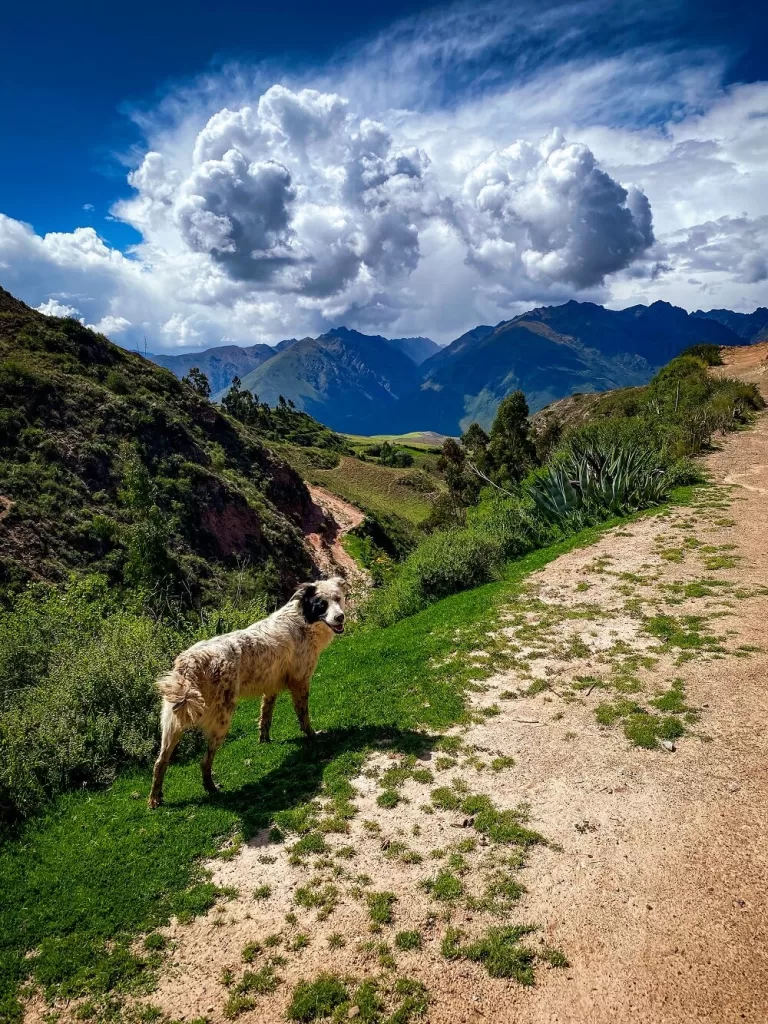
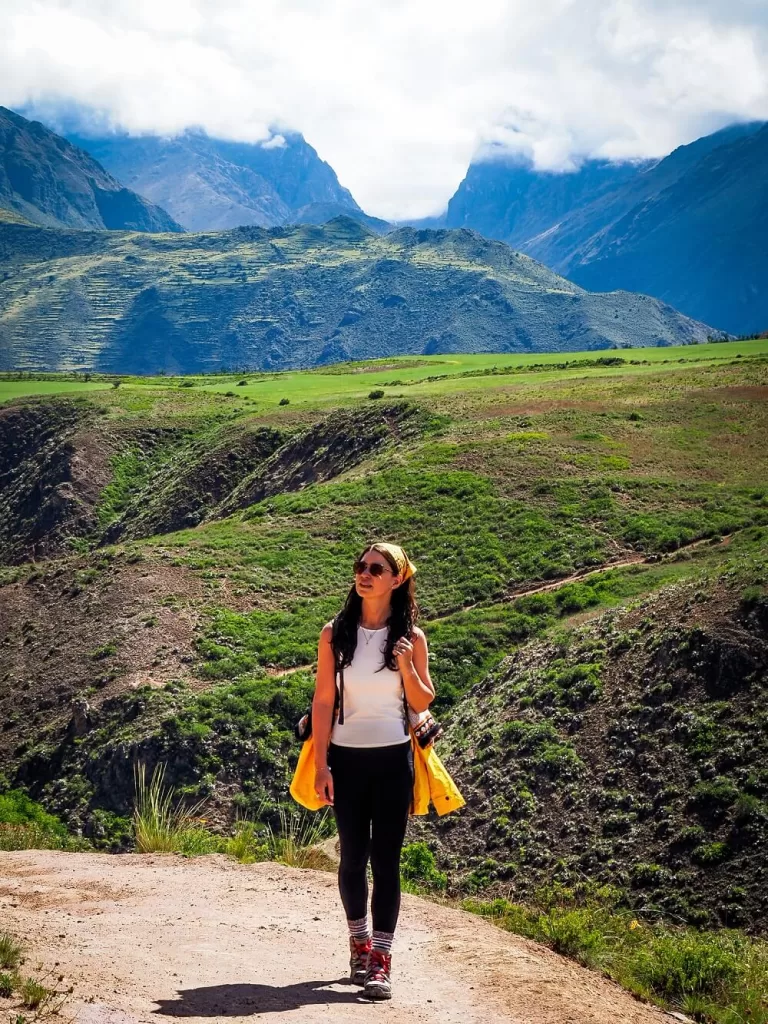
How to Travel Between Maras Salt Mines and Moray Ruins
It’s worth noting that the Maras Salt Mines and the Moray Ruins are both located outside of Maras. To make things a little more complicated, the salt mines are about 9km to the north of Maras, whereas the Inca ruins are about 9km to the west of town.
If you’re with an organised tour then you don’t need to worry too much about your transportation between the two. In fact, if you pick the above mentioned ATV tour then you’ll be travelling between the sites by quad bike.
In case you’re arriving to Maras with a private taxi, we recommend asking the driver to take you to the salt mines first which you won’t spend too long at. Then the driver can take you to the Inca ruins and back to Cusco.
You really need to plan a bit more ahead if you’re getting a colectivo from Cusco to Maras. Here are a few options for you:
- Walk to both sites and back to town. Click here for our exact hiking route map.
- Get a one way ride to one of the sites and then walk back to town.
- Arrange with a driver to take you to both sites and then back to Maras.
For reference, we were staying in Moccopata just outside of Urubamba the night before, so we just hiked from there to the salt mines in the morning and from there to Maras. Then we took a taxi to the Inca ruins and walked back to town afterwards.
Our one way taxi fare was S/.30 (8.30 USD).
How to Get Back to Cusco from Maras and Moray
There are three main ways to get back to Cusco from Maras depending on how you got there in the first place.
You can go back to Cusco with a colectivo. You may find some drivers waiting in the main plaza. The price for your return journey should be S/. 5 (1.75 USD) per person.
You can also get a taxi back to Cusco from Maras which should cost you about the same price as on your way there.
Lastly, if you arrived to Maras as part of an organised tour, they will include your transfer back to Cusco in the price.
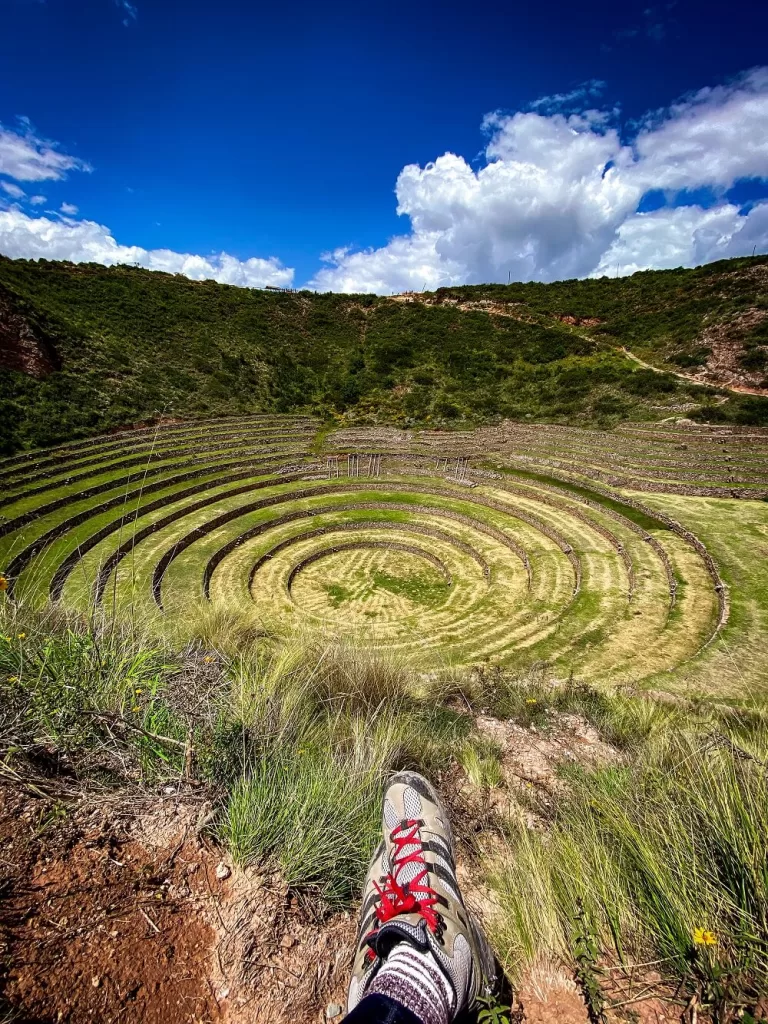
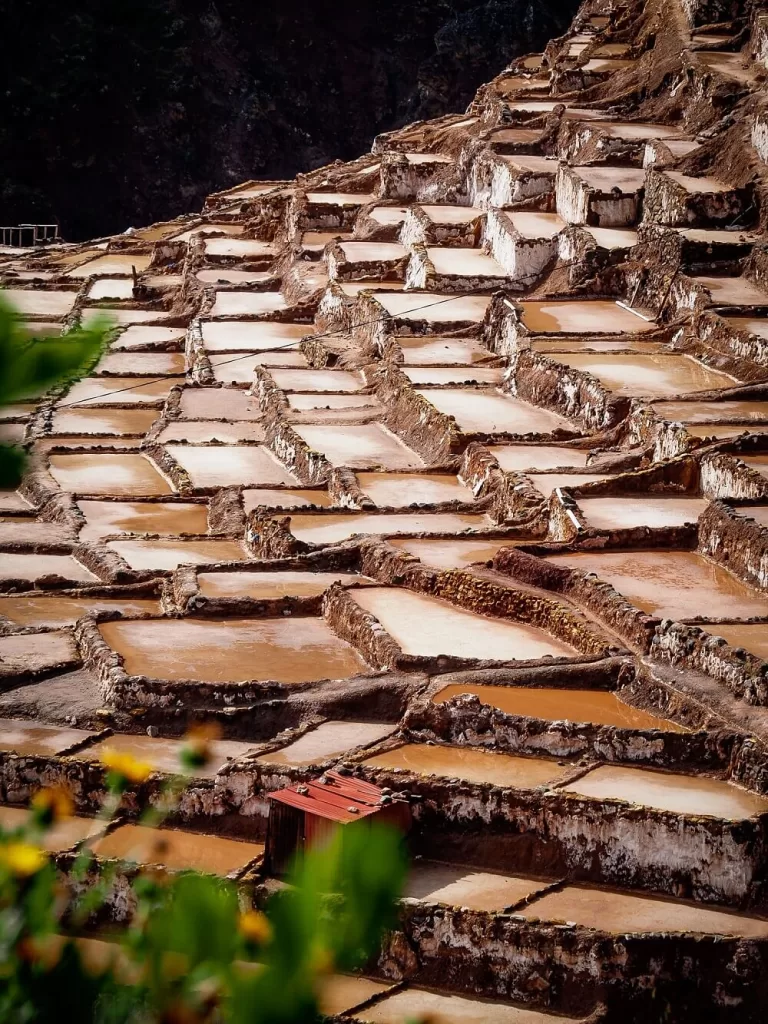
How Long You Need in Maras and Moray
If you’re short on time and just want to see the Salt Mines and Inca ruins, then we recommend leaving first thing from Cusco. You can see the salt mines in about half an hour, but we recommend spending a bit longer at Moray Ruins. Since the two sites are quite far from each other you’ll need to calculate a bit of travel time between the two in.
This is easy if you’ve arrived with a tour or with a private taxi. However, you’ll probably need most of the day to see everything if you’re relying on colectivos and hiking.
If you have a bit more time to spare, we recommend spending a night in Maras. That way you can just visit one site on your first day and the other one on the next. Alternatively, you can also visit both sites in a day and perhaps get a ride to Urubamba and stay there. That way you can visit other towns in the Sacred Valley such as Ollantaytambo or Pisac. We completed a 3-day independent hike within the Sacred Valley visiting these three locations and it was a great way to explore this stunning part of Peru.
Related Blog Posts You May Like:
- Hiking in the Sacred Valley Without a Guide or Tour (Ollantaytambo, Maras, Moray and Pisac)
- A Guide to Visiting Pisac Ruins
- A Guide to Visiting the Ollantaytambo Ruins
- 20 Things to Do in Cusco, Peru – A Complete Guide
- 10 Best Day Trips from Cusco
- The Ultimate 3 Week Peru Itinerary – How to Plan a Trip to Peru
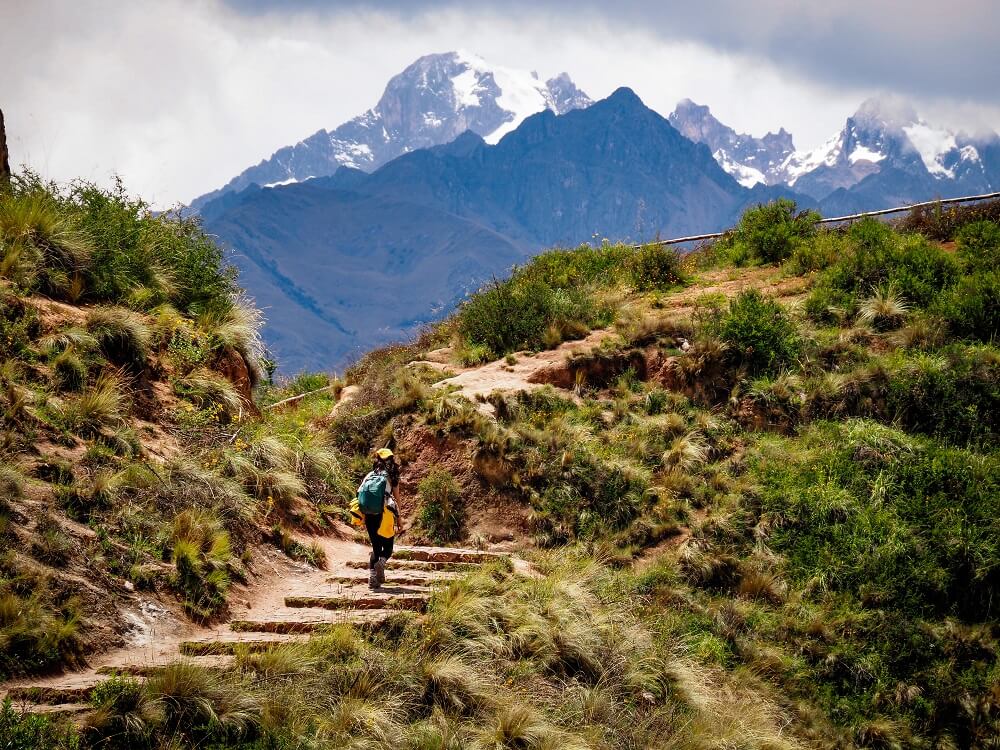
Final Thoughts on Visiting Maras and Moray
We really enjoyed visiting both the Maras Salt Mines and Moray Ruins. They are both incredible sites to see and should be on anyone’s Sacred Valley itinerary. We had the luxury to spend 3 days hiking around the Sacred Valley and luckily had enough time to walk between the sites and really take it all in.
The salt mines were really impressive and since we hiked in from the back entrance we could really appreciate the scale of them.
The Moray Ruins were also much bigger than we initially thought and we spent a good few hours walking around the site enjoying the incredible views of the Andes.
Have you ever been to the Maras Salt Mines or the Moray Ruins? If so, how did you visit the sites? What was your experience? If not, would you add these to your Peru bucket list? Let us know in the comments below.
Now, let your adventure begin,

Our Top Travel Resources
Accommodation: For hotels we always use Booking.com and Hostelworld for hostels. We also book longer stays on Airbnb or Vrbo.
Flights: To find the best flight prices we always check Skyscanner, Google Flights or WayAway. Then we also check the airlines’ websites too for comparison.
Car Rentals: We use Discover Cars when we want to rent a car as it compares local, national and international companies.
Activities: If we book organised tours we always check either GetYourGuide or Viator.
Foreign Currency: Whenever we can we prefer to pay in local currency and for that we always use our Wise card. We can easily withdraw money from the ATM or pay by card at most shops and restaurants.
Travel Insurance: We never go anywhere without travel insurance. You never know what will happen on your trip, so good travel insurance like SafetyWing can protect you in case of injury, illness, theft and cancellations.
eSIM and VPN: To get data abroad we use Airalo which is an app that allows you to download a prepaid eSIM to your phone in over 190 countries. Make sure to have a VPN to avoid hackers accessing your personal data when using public WIFI. We use Surfshark which is the only VPN that offers one account on unlimited devices.
Remember…It all starts with a Pin…

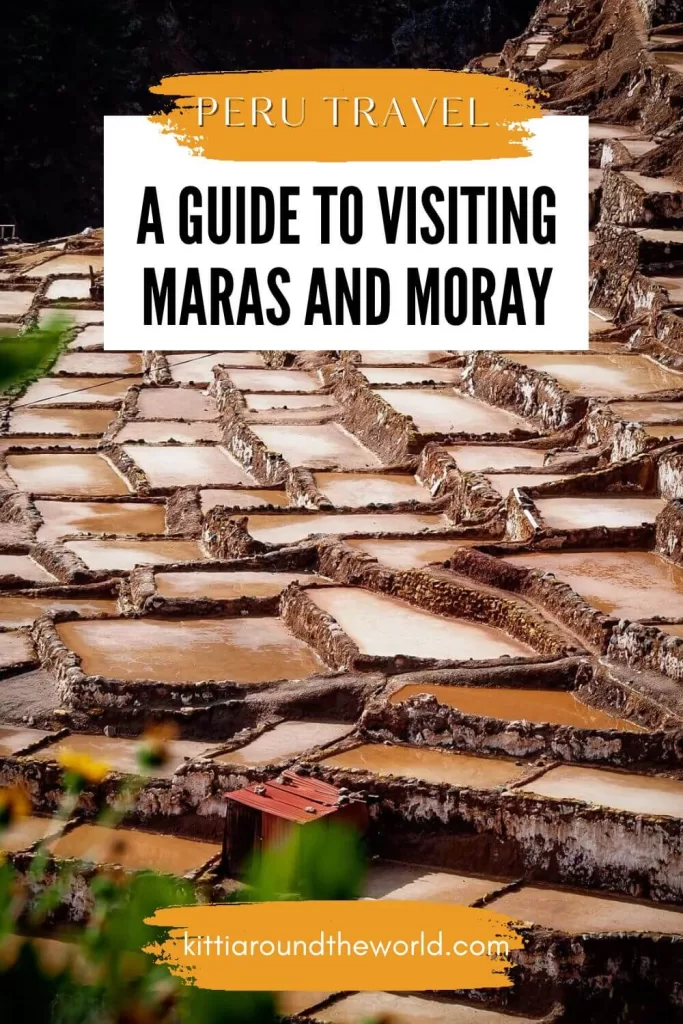

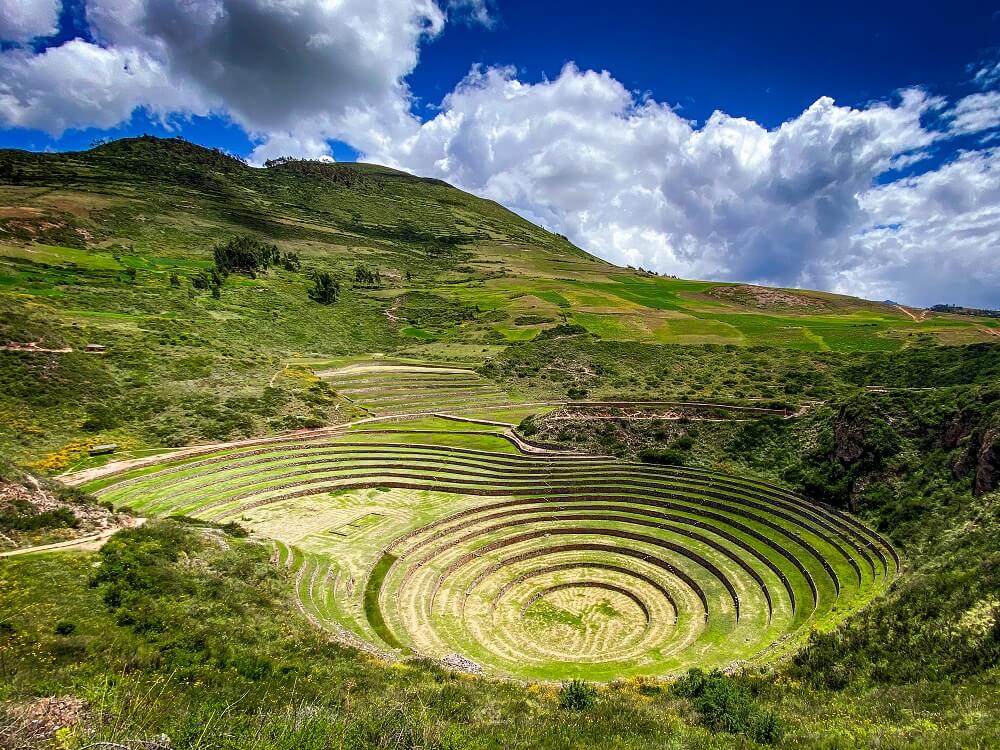
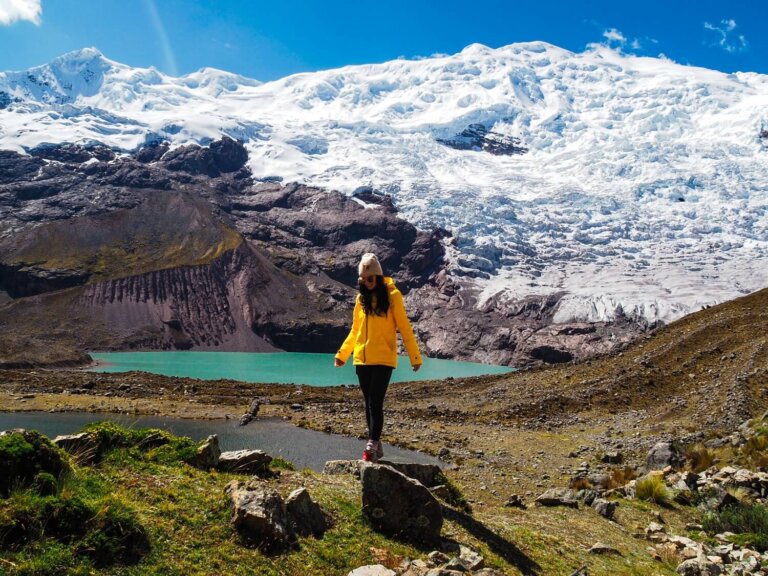


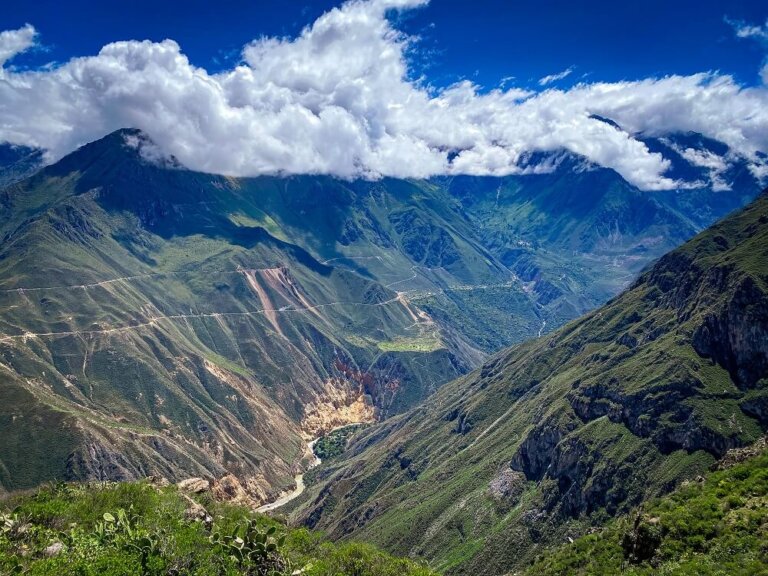
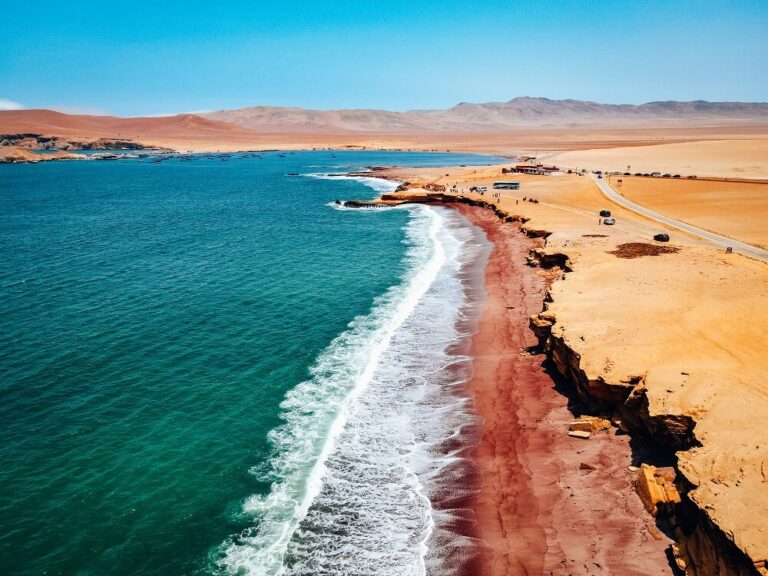
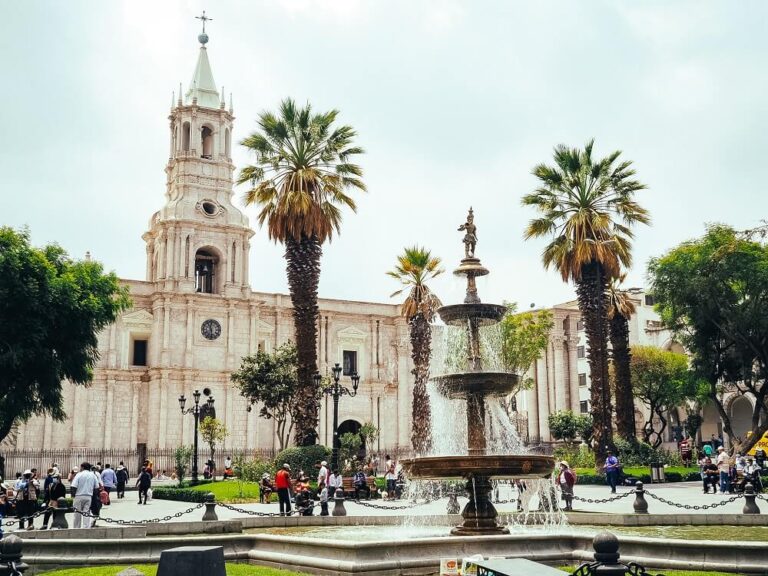
Thank you for the helpful info! I was wondering if these sites are strict on their opening and closing times? When we car camped around the UK there were some castles (including more touristy ones) that we were able to go to before opening hours and walk around the grounds and take pictures. Whereas the opening hours were more for tours inside the castle. Is this the same for some of Peruvian sites if you hike to them or are they gate guarded? Thanks, Alyssa
Hi Alyssa, thank you for your comment. Most of these sites in Peru won’t be accessible outside of opening times unlike in the UK where you can walk around the grounds for free. We could walk along Maras Salt Mines arriving from the back end without paying but as soon as we got closer to the tourist entry we had to buy a ticket regardless. Hope this helps, Kitti